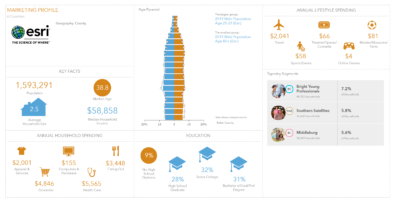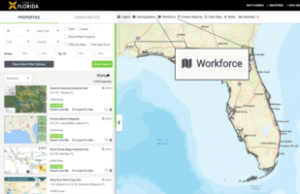Blog
GURU supports your major economic development workflows with integrated, cutting-edge features.
Workforce Data in Online Site Selection Technologies
.png)
Key Takeaway: The site selection process usually begins with workforce as the first criterion, and to compete and win in today’s workforce-driven site selection process economic developers need to utilize modern technology that lets businesses start their site selection process with workforce data. GIS WebTech’s Recruit puts workforce data front and center on the landing page, allowing immediate use of workforce as the starting criterion for site selection. Legacy technologies, in contrast, do not allow access to workforce data to start the site selection process, eliminating the ability to use workforce as the initial search criterion and conflicting with today’s workforce-driven site selection process.
Case Study
Let’s take a quick look at the case of a major manufacturer seeking to locate a new facility. The plant will create several hundred high-paying jobs and will add materially to the local tax base. Because the company is growing so quickly it has a rapid timeline and prefers to modify an existing facility rather than build.
The company has some basic infrastructure requirements, but these won’t require investments by the local community in sewer, water, or other utilities. The manufacturer is financially sound and well regarded in its industry, and has proved to be a good community partner in its other locations.
In short, this represents the type of project most economic developers spend their days trying to win.
In short, this represents the type of project most economic developers spend their days trying to win.

National Search
Like most businesses, the company utilizes Esri tools to perform analysis and puts together a list of several dozen regions for further investigation. It then goes to the websites of the EDOs serving those regions to gather local data.
Local Site Selection
Like most businesses, this manufacturer starts its local search with workforce. The company has learned from experience that workforce is the most difficult piece of the puzzle, and looking into other local requirements is a fool’s errand without assuring the necessary workforce skills are present.
The company is not willing to evaluate specific properties or specific communities until it sees, through objective data, that its skill needs can be met in that region. Only after it is convinced of the viability of workforce will it begin to look at specific properties or communities.
So what happens when the company goes to the websites of the EDOs covering the regions it is considering? It gets two very

GIS WebTech’s Recruit Technology
Provides Immediate Access
to Workforce Data
different experiences.
EDOs running modern online site selection technology provide the company access to workforce data directly on the landing page, allowing the company to find the workforce skills they are looking for in a few seconds with just a few clicks. The manufacturer then looks at properties and communities in the areas with the relevant workforce resources and moves forward quickly to add these EDOs to its emerging short list, and contacts them for an introduction.
However, the manufacturer gets a very different experience when using legacy technologies provided by the second group of EDOs. When the company opens these older technologies it finds no access to workforce data on the landing page, and no obvious link to it. The company struggles to find the data, and suffers through a frustrating process of trial-and-error with the various buttons and pull-down menus.
Eventually, the company realizes they have no direct access to workforce data and can only access it if they select a property or community first. The company concludes, correctly, that there is no ability to use workforce as the initial search criterion. The older technology, out of step with today’s site selection process, does not allow it.
The reason? Legacy technologies are not designed for today’s workforce-driven site selection process. Instead, legacy technologies reflect the way site selection was done years ago, when those technologies were built.
So what does the company do? Exactly what you would expect. With a lot of regions to consider and a demanding project schedule, the company naturally focuses on the regions that have provided the critical data they are looking for. It sets the other regions aside and no longer considers them.
For the EDOs running legacy technologies this represents a major missed opportunity. Their older technology’s poor alignment with today’s workforce-driven site selection process cost them this potential project.
For the EDOs running legacy technologies this represents a major missed opportunity. Their older technology’s poor alignment with today’s workforce-driven site selection process cost them this potential project.
For the EDOs in the winning group, their use of modern technology pays off in more and better projects. These EDOs provide a newer technology tailored to the needs of modern site selection, with workforce data front and center. Their technology provides them an obvious source of competitive advantage.
Best of all, these EDOs get the benefits of their newer technology at prices usually lower than that of the legacy technologies, due to the relentless decline in technology costs.
Interested in learning more? Drop me a note at ron@giswebtech.com and be sure to connect with me on LinkedIn!